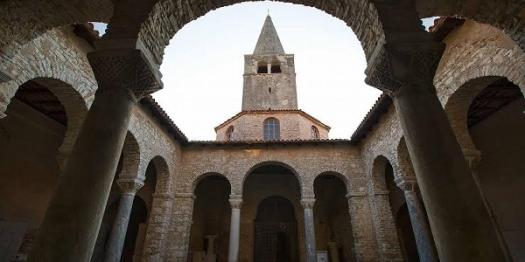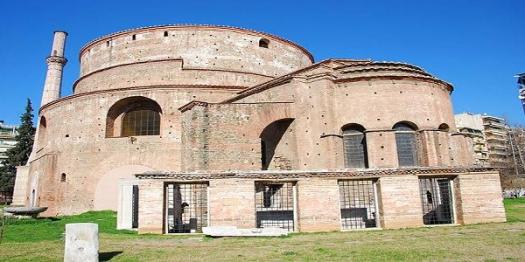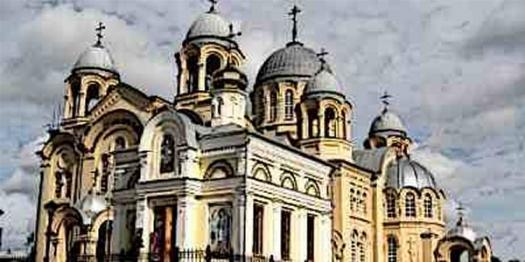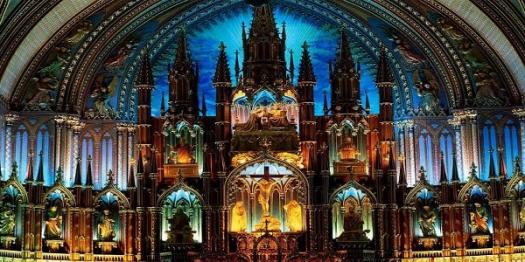Early Christian Architecture Trivia Quiz
(239).jpg)
At first, suppressed because the religion was considered illegal, Christianity soon began to flourish and there became a need for an established meeting place. This led to early Christian architectural designs. Although most were eventually destroyed, some have managed to survive. Answer the following questions on the early Christian architecture and other things of relevance around early Christianity.
- 1.
Which of the following cultures influenced early Christian architecture?
- A.
Egyptian
- B.
Roman
- C.
Middle Eastern
- D.
Nordic
Correct Answer
B. RomanExplanation
Early Christian architecture was heavily influenced by Roman culture. The Romans were known for their advanced architectural techniques and grand structures, which had a significant impact on the development of early Christian architecture. Many of the architectural elements and styles used in early Christian buildings, such as basilicas and domes, were borrowed from Roman architecture. Additionally, the use of Roman construction materials and methods, such as concrete and arches, further demonstrate the influence of Roman culture on early Christian architecture.Rate this question:
-
- 2.
The best available examples of Christian architecture from the 3rd and 4th centuries can be found in _____
- A.
Iran
- B.
Iraq
- C.
Egypt
- D.
Syria
Correct Answer
D. SyriaExplanation
The best available examples of Christian architecture from the 3rd and 4th centuries can be found in Syria. Syria was home to some of the earliest Christian communities, and it was in this region that early Christian architecture developed and flourished. The city of Antioch in Syria, for example, was an important center of early Christianity and had numerous churches and basilicas. The architecture of these early Christian structures in Syria is characterized by a blend of Roman, Byzantine, and local influences, showcasing the evolution of Christian architectural styles during this period.Rate this question:
-
- 3.
Basilica which eventually became an early Christian place of worship originally denoted _____
- A.
Kingly or Lordly things
- B.
Serpents
- C.
Round houses
- D.
Religious things
Correct Answer
A. Kingly or Lordly thingsExplanation
The word "basilica" originally denoted kingly or lordly things. In ancient Rome, a basilica was a large public building used for various purposes, including as a place for legal and administrative affairs, as well as for public gatherings. Over time, the term was adopted by Christians to refer to a type of church building that was used for worship and other religious activities. The use of the term "basilica" for Christian places of worship highlights the significance and grandeur associated with these early Christian buildings.Rate this question:
-
- 4.
Early Christian art and architecture is also known as _____
- A.
Paleachristian art
- B.
Paleechristian art
- C.
Paleochristian art
- D.
Paneochristian art
Correct Answer
C. Paleochristian artExplanation
Paleochristian art refers to the art and architecture created by early Christians during the late Roman Empire and the early Byzantine Empire. It is characterized by its incorporation of Christian symbols, themes, and motifs, as well as its adaptation of classical Roman and Greek artistic styles. This term is commonly used to describe the art and architecture produced from the 2nd century to the 6th century CE, before the rise of Byzantine art.Rate this question:
-
- 5.
What emperor is linked with early Christian architecture?
- A.
Emperor Augustus
- B.
Emperor Constantine I
- C.
Emperor Nero
- D.
Emperor Commodus
Correct Answer
B. Emperor Constantine IExplanation
Emperor Constantine I is linked with early Christian architecture because he was the first Roman emperor to embrace Christianity and played a significant role in its establishment as the state religion. He issued the Edict of Milan in 313 AD, which granted religious freedom to Christians and led to the construction of numerous churches and basilicas throughout the Roman Empire. Constantine also initiated the construction of the famous Church of the Holy Sepulchre in Jerusalem, which became a model for early Christian architecture. His reign marked a turning point in the history of Christianity and its integration into Roman society.Rate this question:
-
- 6.
In what century did the Christian population begin to build larger and grander public meeting places?
- A.
The 4th
- B.
The 2nd
- C.
The 1st
- D.
The 8th
Correct Answer
A. The 4thExplanation
During the 4th century, the Christian population started constructing larger and more magnificent public meeting places. This period marked a significant shift in the development of Christian architecture and the growth of Christianity as an accepted religion. The construction of these grand structures demonstrated the increasing influence and status of Christianity within society during this time.Rate this question:
-
- 7.
The invention of the Christian building specifically happened under this monarch
- A.
Emperor Claudius
- B.
Emperor Titus
- C.
Emperor Constantine I
- D.
Emperor Tiberius
Correct Answer
C. Emperor Constantine IExplanation
Emperor Constantine I is the correct answer because he played a significant role in the invention of Christian buildings. During his reign, he issued the Edict of Milan in 313 AD, which legalized Christianity in the Roman Empire and ended the persecution of Christians. Constantine also commissioned the construction of several important Christian buildings, including the Church of the Holy Sepulchre in Jerusalem and the original St. Peter's Basilica in Rome. His support and patronage of Christianity greatly influenced the development of Christian architecture and the establishment of Christian worship spaces.Rate this question:
-
- 8.
Christian art and architecture that happened immediately after 525 is referred to as _____
- A.
Paleochristian
- B.
Byzantine
- C.
Roman
- D.
Renaissance
Correct Answer
B. ByzantineExplanation
The correct answer is Byzantine. The term "Byzantine" refers to the art and architecture that emerged after 525 AD. This period is characterized by the influence of the Eastern Roman Empire, with a focus on religious themes and an emphasis on intricate mosaics, domed structures, and rich ornamentation. Byzantine art and architecture played a significant role in shaping the aesthetic and cultural identity of the Eastern Mediterranean and Europe during this time.Rate this question:
-
- 9.
Which of the following was not borrowed by early Christian art from pagan iconography?
- A.
The peacock motif
- B.
Grapevines motif
- C.
Good Shepherd
- D.
Ikhthus
Correct Answer
D. IkhthusExplanation
Early Christian art borrowed many symbols and motifs from pagan iconography as a way to communicate their beliefs and messages to a wider audience. The peacock motif was commonly used in early Christian art to symbolize immortality and resurrection. Grapevines were often depicted to represent the Eucharist and the blood of Christ. The Good Shepherd was a popular image in early Christian art, symbolizing Jesus as the caring and guiding figure for his followers. However, the Ikhthus, also known as the fish symbol, was not borrowed from pagan iconography. It was a distinct symbol used by early Christians to identify themselves and their faith.Rate this question:
-
- 10.
The model Constantine used to memorialize his imperial piety was architecture of _____
- A.
Temples
- B.
Basilicas
- C.
Synagogues
- D.
Roman public buildings
Correct Answer
B. BasilicasExplanation
Constantine used basilicas to memorialize his imperial piety. Basilicas were large, grand buildings that were typically used for public gatherings and legal proceedings in ancient Rome. Constantine repurposed these structures to showcase his devotion to Christianity and to establish his authority as the Roman Emperor. By converting basilicas into Christian places of worship, Constantine was able to symbolically align himself with the growing influence of Christianity in the Roman Empire and solidify his image as a pious ruler.Rate this question:
-
Quiz Review Timeline +
Our quizzes are rigorously reviewed, monitored and continuously updated by our expert board to maintain accuracy, relevance, and timeliness.
-
Current Version
-
Mar 22, 2023Quiz Edited by
ProProfs Editorial Team -
Mar 15, 2019Quiz Created by
Lynn Bradley
 Back to top
Back to top












